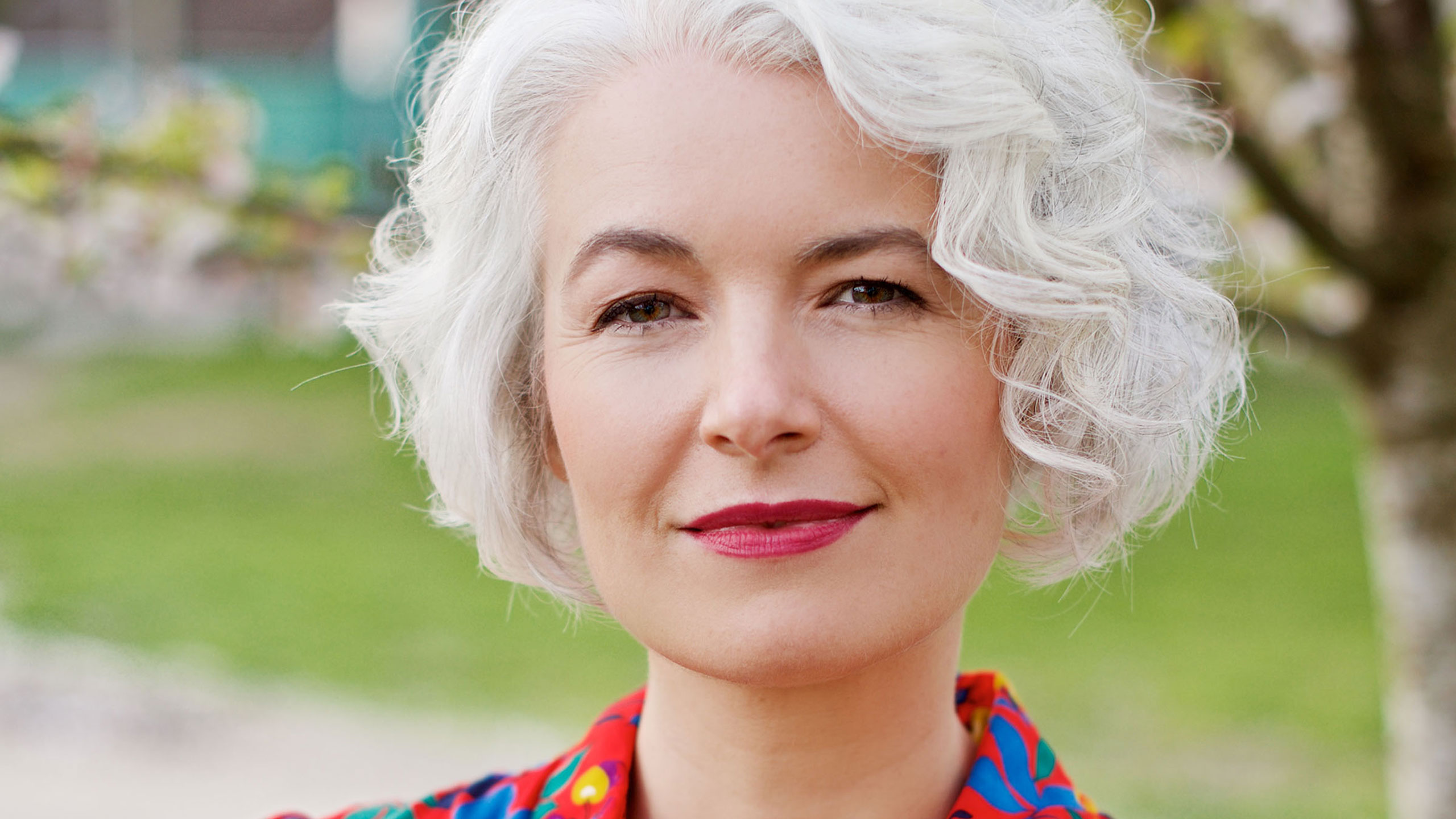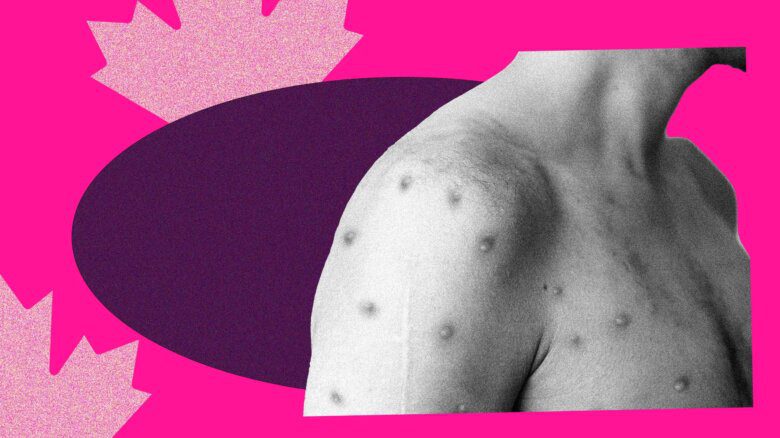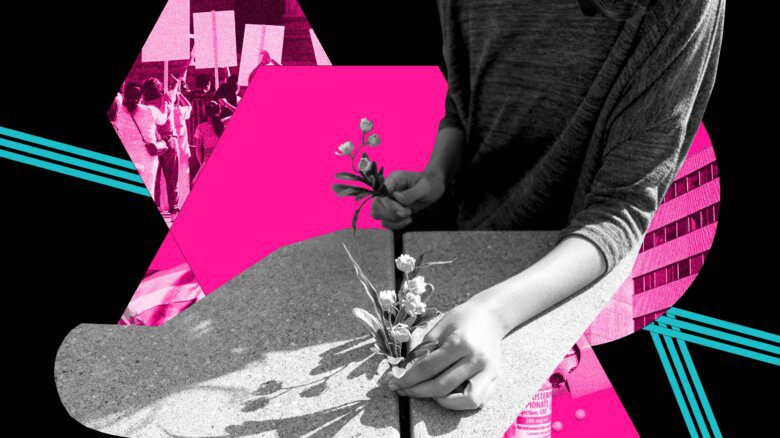“What if queer and trans people actually liked going to the doctor?” That’s the question Zena Sharman’s latest book centres around. In The Care We Dream Of: Liberatory and Transformative Approaches to LGBTQ+ Health, Sharman, a writer, speaker and health care advocate, weaves together essays and research with poetry, non-fiction writing and interviews with other leading LGBTQ2S+ voices. Together, the contributors begin to imagine how we can transform our health care systems so that they become sites of genuine healing and care for us all.
Xtra caught up with Sharman to dream together about what that might look like.
You’re a Canadian writer. Here, we’re so used to hearing about how much better our health care system is compared to the U.S. But we know that our “universal” health care doesn’t support everyone equally.
That’s right. One of the things The Care We Dream Of tries to do is dig into this idea that the healthcare system isn’t broken—it’s working as designed. I wanted to be in a space of curiosity and interrogation about the logic at the core of most health systems, whether public or private. They so often are not designed to meet the needs of people who deviate from an incredibly narrow ideal of what a “healthy” person should look like. That means that health care can often become systems of conformity or social control. And as far too many queer trans people know, a site of violence and harm.
As you, and I, and so many people that we love in our community know, LGBTQ2S+ people systematically experience discrimination in our system. And that frequently leads to people delay or avoid care—not just preventive health care, but also even emergency care. People are trying to weigh the risks of interacting with institutions that might further harm them.
“Health care can often become systems of conformity or social control.”
The LGBTQ2S+ community, obviously, is not the only group doing this kind of calculus. You see something similar reflected in the experience of Black and Indigenous folks, as well as other people of colour, for example. You hear similar things from people who are disabled, sex workers, folks who use drugs. Plenty of people are coming into the health system bracing themselves for harm instead of healing and care.
When you say the health care system is working as designed, what do you mean by that exactly?
I want to encourage readers to practice looking at health care as a system, and not just something we take for granted as always existing in the same form. How do we develop the ability to say, “Hey, wait a minute, this came from somewhere.”
My own thinking has been informed by disabled and BIPOC thinkers engaging with the notion of the medical industrial complex and the kinds of racist, ableist, cis-normative, homophobic logics that are often operating in the context of our health systems. These logics lead to an incredibly narrow norm regarding who is seen as “normal,” who is seen as a good or compliant patient. Then the bodies that don’t fit that narrow ideal are excluded from care—or the system tries to eliminate them altogether. So we can’t actually just reform this thing by tinkering around the edges. What we fundamentally have to do is really question where the system came from. What does that mean for how it operates today, and the kind of strategies and tactics we might use to call for change?
Where can we look for those strategies?
We might look to the places where communities wish to divest from the system entirely and build outside of it. I think health care is one of those places where there’s really powerful opportunities to learn from movements and scholarship around police and prison industrial complex abolition. Abolitionists of those communities offer incredibly potent ways of thinking and acting about systemic change. I think they can be applied to the health system.
Given the inherent inequality built into the system, should we even be trying to work towards change within it?
I do see examples where there are communities really actively and purposefully organizing outside our system. Here in British Columbia is the Catherine White Holman Wellness Centre, which is a centre for trans, Two-Spirit and gender diverse folks that was created originally by Fin Gareau, a Two-Spirit nurse practitioner. Back when Finn was a nursing practicum student, he realized that he wanted to create a by-community-for-community low-barrier space that purposely operates outside the health system.
I also see examples of within-the-system work. Vancouver Coastal Health now offers lower surgery for trans folks in B.C. Previously, the only clinic that offered this in Canada was located in Montreal, so they’ve created really big increases in access to surgical care.
So within-system versus outside-system is something to think about tactically. There’s no one right way to do it. There are places where we can start small, even something as small as shifting our own mindsets about what we might want to expect from our own care. Not that those expectations are always going to be met—but that, I think, is also part of your work The Care We Dream Of is trying to do. I want to invite us to dream differently, but also to expect more.
Speaking of expecting more, one of the ideas in the book that really stuck with me was that of “pleasure-centred health care.” In my experience, going to the doctor is never exactly an enjoyable experience. For those who haven’t yet read the book, can you explain a bit about what this term means?
The idea is discussed in a conversation with Dawn Serra. Like you said, the idea that health care might feel enjoyable or pleasurable seems unfathomable to people, and I wanted to ask why. What I appreciate about what Serra offers in this discussion of pleasure-centered health care is an expansive invitation into the notion of pleasure. It’s not pleasure in the sense of something sexual, but rather it’s about this sense of aliveness, this liberatory potential and actually being able to feel enough safety to fully experience and enjoy the senses our bodies have to offer.
Serra looks at how our health system might change to centre that pleasure. She speaks from her experience as someone who experiences chronic pain and talks about this idea that she feels like, so often, the bar for healthcare is about minimizing pain, at best. She asks: what if my health care provider were to ask me questions like, “What brings you pleasure? How might we increase your life? Like what feels good? How can we bring you more ease?”
She also speaks to how we might actually create spaces that feel more pleasurable whether that be chairs that feel really good to sit in, or spaces that are aesthetically beautiful—that feel welcoming, that feel safer. Both Serra and I explore this notion that feeling good should be something that we expect and dream of. That was a core entry point for me into the book, right? This idea of what if queer and trans people loved going to the doctor?
After spending so much time researching, writing and talking to others, what elements do you think a health care system has to have in order to allow LGBTQ2S+ folks to flourish?
A really critical element is flexibility. That’s something that actually butts up against the very notion of a system itself. There’s no one-size-fits-all way to do this, so we need to create a system that’s equipped to meet people in the fullness of who they are.
This can start with workers. Medicine skews white, cis and wealthy—it’s not an accessible profession for most people. With a much greater diversity of care providers, we would also get care rooted in people’s traditional cultural modes of hearing, their community connections. That could help us to create spaces where we have a lot more time and capacity to build relationships with our care providers, and, and be engaged in a dialogue around what actually matters to us and what health and healing look like to us.
There’s also the idea that very few health care providers get adequate training in LGBTQ2S+-specific care. Some of the most important things I’ve learned about care and caregiving, I’ve learned from living in the queer community. Things like practising consent, being trauma-informed—they’re not things that have been taught to me through formal sources. I think it’s really important for each of us to be able to honour those kinds of lineages. Medical “expertise” can get lifted up as this thing that can only be gained through formal knowledge and credentials and titles. And I think we really need to be recentring the expertise that that queer and trans people hold over our own lives and bodies.
You’re certainly not alone in feeling like much of the important information related to care has come from outside the system. I can’t even tell you how much time I’ve spent on trans care-related forums.
Absolutely. The book references an essay by micha cárdenas, a trans woman of colour, about reproductive futures. She talks about learning from other trans women about hormones and being able to look at one’s own sperm mobility using a children’s microscope. That, to me, feels like such a brilliant and powerful example of the kind of innovation that happens within our communities—the idea that you can repurpose a $50 children’s microscope for your own DIY fertility. As someone who helped my partner get pregnant using a syringe and a mason jar, that kind of community-rooted knowledge really resonates with me.
What do you hope readers will take away from this book?
I hope that we start to have a shift in mindset. That’s the first step for systems change. It’s time for LGBTQ2S+ people to ask ourselves: What if? What if we didn’t always have to brace ourselves for violence and harm whenever we walked into the doctor’s office? Could we actually imagine something that felt really good and that felt genuinely healing? What if? And also why not?


 Why you can trust Xtra
Why you can trust Xtra


